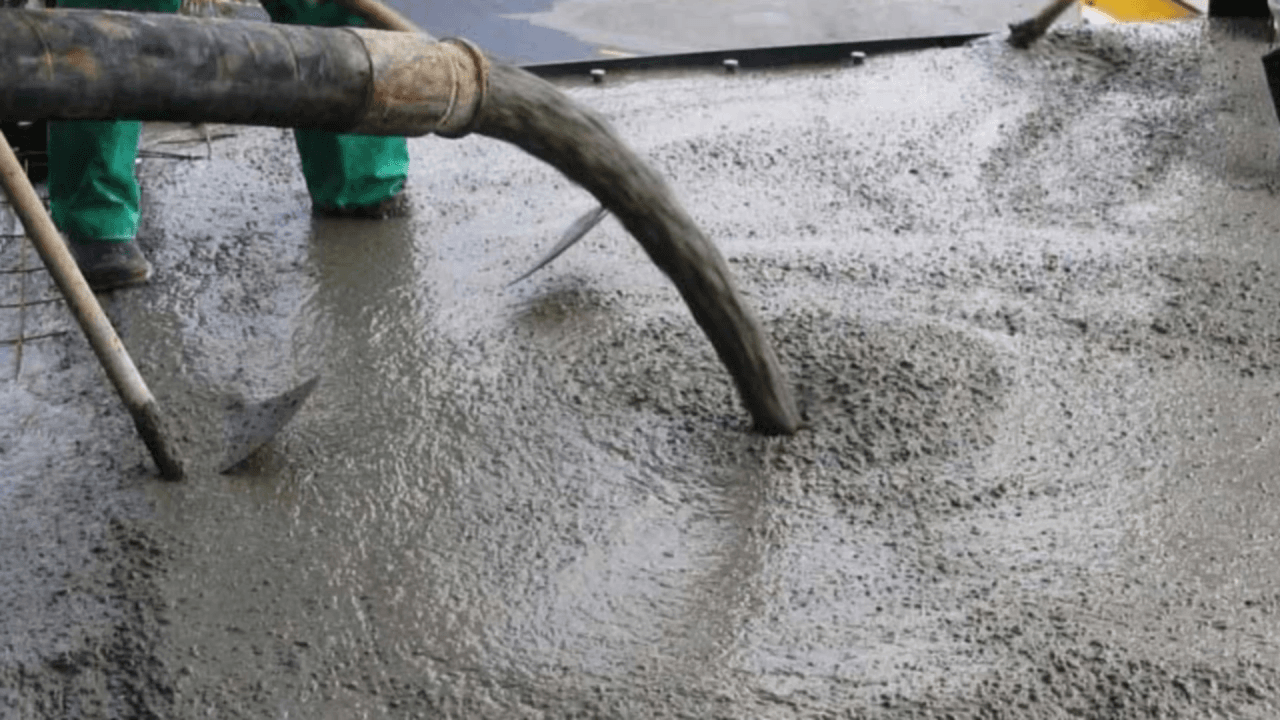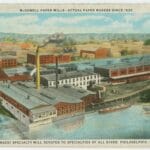Picture this: a concrete that can flow and fill every nook and cranny, smoothing itself out like a dream. Ready for a deep dive into the world of Self-Compacting Concrete? This magic material has been a game-changer in construction, and we’re going to take a trip through its history, from its humble beginnings to its cutting-edge applications. Get ready to learn about the unique properties that make SCC so special and how it’s helping us build smarter, greener, and more durable structures.
History of Self-Compacting Concrete
Imagine a type of concrete that practically pours itself, effortlessly flowing into every nook and cranny of even the most complex molds. That’s the magic of self-compacting concrete (SCC)! But this isn’t magic, it’s clever engineering.
The story begins in 1988, when Japanese professor H. Okamura recognized a growing concern in the construction world: a shortage of skilled laborers coupled with increasingly intricate building designs. His innovative solution was a concrete that practically placed itself – SCC.
This novel material was a game-changer. Its ability to flow like a thick liquid meant it could easily navigate around dense reinforcement bars and fill those tricky, oddly shaped molds that would have posed challenges for traditional concrete. And because it settled on its own, the need for heavy vibrators to ensure compaction was eliminated, leading to quieter and faster construction sites.
So, what makes SCC so special? The answer lies in its unique composition. SCC is formulated with a lower yield stress, meaning it’s less resistant to flow, and higher deformability, allowing it to change shape easily without losing its strength. Think of it like comparing ketchup to honey – the honey will spread out and settle on its own, while the ketchup needs a little persuasion.
This free-flowing nature brings a ton of benefits. First off, it significantly reduces the labor needed for placement, saving time and money. Secondly, less vibration during placement means fewer noise complaints and minimizes the risk of damage to surrounding structures. And because it fills molds so completely, you’re left with a super smooth, aesthetically pleasing surface, almost eliminating the need for additional finishing work.
SCC is a prime example of how innovation can lead to more efficient and sustainable construction practices. And the story doesn’t end there. Researchers are constantly experimenting with new materials and methods to make SCC even more environmentally friendly. Imagine a future where our buildings are built with self-compacting concrete made from recycled materials – now that’s a future we can all get behind!
However, like any innovation, SCC presents its own set of challenges. As its use becomes more common, it’s crucial to study its impact on the construction industry. How will this shift in technology affect the demand for skilled labor? Will we need to rethink training programs and job roles? These are all important questions that researchers are actively exploring.
The history of self-compacting concrete is a fascinating tale of innovation and ongoing discovery. As we delve deeper into the potential of SCC, we open up new possibilities for building stronger, more sustainable structures, while simultaneously shaping the future of the construction industry.
Who Invented SCC?
While we’ve discussed what self-compacting concrete is and how it’s transforming the construction industry, the question remains: who was the mastermind behind this super-concrete? The credit goes to none other than Professor Hajime Okamura.
In 1986, while working at Kochi University in Japan, Professor Okamura recognized a growing problem in the construction world: a shortage of skilled labor, which posed a significant challenge for the labor-intensive work of traditional concrete placement.
Professor Okamura, a true innovator, envisioned a type of concrete that could practically pour itself, filling every nook and cranny without needing a team of skilled workers to vibrate it into place. This vision led to the birth of self-compacting concrete.
His groundbreaking research didn’t just revolutionize concrete—it addressed a real-world challenge and paved the way for more efficient and durable construction practices.
Key Details:
| Detail | Information |
|---|---|
| Inventor | Professor Hajime Okamura |
| Year of Invention | 1986 |
| Place of Invention | Kochi University, Japan |
| Motivation for Invention | Address the shortage of skilled labor in Japan’s construction industry |
Is Self-Compacting Concrete Better Than Normal Concrete?
Self-compacting concrete (SCC) has undoubtedly simplified construction processes, but the question remains: is it inherently better than traditional concrete?
Regular concrete is known for its stiffness, requiring vibration or manual effort to settle into place. In contrast, SCC flows effortlessly, filling every nook and cranny without any extra help. This difference stems from its design, which prioritizes fluidity and a near-melting ability within the formwork.
This unique characteristic of SCC translates into tangible benefits:
Pros:
- Cost Savings on Labor: The elimination of heavy-duty vibrators and the reduced need for manual labor translates to significant cost savings.
- Sleek and Polished Finish: SCC naturally produces a smooth, even surface, reducing the need for additional finishing work and associated costs.
- Quieter Construction Sites: The absence of constantly buzzing vibrators makes concrete pouring considerably quieter, benefiting both construction workers and surrounding communities.
- Enhanced Durability: SCC’s composition makes it less prone to cracking over time, contributing to its durability.
Potential Downsides:
Some argue that the specialized ingredients required for SCC make it more expensive to produce than traditional concrete. Additionally, improper mixing can potentially lead to issues down the line.
Conclusion:
SCC presents significant advantages, particularly for large-scale projects and noise-sensitive environments. However, it’s not a universal solution. The best choice depends on project-specific needs, budget constraints, and material availability in a given area.
Further Exploration:
Concrete technology is continuously evolving. Scientists and engineers are constantly striving to improve existing materials and develop new ones. Those interested in delving deeper can explore recent publications in journals like “Cement and Concrete Research” or “Construction and Building Materials.” You might just uncover the next big thing in concrete!
Is There a Code for Self-Compacting Concrete?
Just like any crucial aspect of construction, the use of self-compacting concrete (SCC) is governed by regulations to ensure safety and longevity. These regulations come in the form of building codes.
Think of it like baking a cake. You can’t just throw ingredients together and hope for the best. You need a recipe, and in the construction world, that recipe is the building code. These codes ensure that structures are built to last and meet safety standards.
For SCC, the “recipe book” is ACI 309.2R-09, a guideline published by the American Concrete Institute to ensure uniformity in the use of SCC.
ACI 309.2R-09 covers a wide range of aspects:
- Definition of SCC: It establishes a standard definition of SCC to avoid confusion.
- Composition Requirements: It specifies the exact blend of aggregates, cement, admixtures, and even fibers that can be used in SCC.
- Mix Design Guidelines: It outlines the crucial process of achieving the correct proportions of ingredients, ensuring the desired properties of the SCC.
- On-Site Usage Procedures: It provides guidance on techniques for placing, finishing, and curing SCC, which differ from those used with traditional concrete.
- Testing Protocols: It outlines specific tests to ensure that the SCC meets the required strength and quality standards.
ACI 309.2R-09 acts as a quality control checklist. By adhering to these guidelines, engineers and contractors can be confident that their SCC projects will be safe, durable, and long-lasting. It’s about constructing buildings that stand the test of time.
Key Takeaways:
- A specific code, ACI 309.2R-09, governs the use of SCC.
- This code serves as a comprehensive guide, ensuring the proper and safe utilization of SCC.
- Following the code is crucial for maintaining safety, quality, and ensuring the longevity of structures.
Remember that the world of construction is dynamic and constantly evolving. While ACI 309.2R-09 currently serves as the standard, ongoing research will undoubtedly lead to new discoveries and advancements in self-compacting concrete technology.
When Was Roller Compacted Concrete Invented?
Roller-compacted concrete (RCC), a relatively new addition to the world of construction materials, first emerged in Italy in the early 1960s. It made its debut during the construction of the Alpe Gera Dam.
RCC stands out for its unique blend of concrete strength and the rapid placement process characteristic of asphalt. Its effectiveness and affordability caught the attention of engineers worldwide.
In the early 1980s, the United States embraced RCC for the construction of the Willow Creek Dam, a project that significantly boosted RCC’s popularity.
By 2008, over 350 RCC dams had been constructed globally, demonstrating the material’s adaptability to various climates and conditions.
One remarkable example of RCC’s strength is the Gilgel Gibe III Dam in Ethiopia, completed in 2015. Standing tall at 250 meters (over 820 feet), it holds the title of the tallest RCC dam ever built.
While the early 1960s mark the “birth” of RCC, it remains a subject of ongoing research and development. Scientists and engineers are continually working to enhance its properties and explore new applications. The future of this versatile material is full of exciting possibilities.
What is the Origin of Self-Compacting Concrete?
Let’s rewind to 1986, when Professor Hajime Okamura, a visionary in the field of construction materials, noticed a pressing issue in Japan’s construction industry – a shortage of skilled labor, particularly in concrete pouring.
Traditional concrete pouring was a physically demanding process requiring skilled workers to vibrate and compact the concrete, ensuring it settled correctly and without any weak points. Professor Okamura envisioned a more efficient solution – a self-compacting concrete.
This vision led to the birth of self-compacting concrete (SCC). However, achieving this self-compacting property wasn’t a simple task. It required meticulous adjustments to the traditional concrete recipe.
Concrete is typically a mixture of cement, aggregates (like sand and gravel), and water. To make it self-compacting, Professor Okamura and his team experimented with ingredient ratios and added special admixtures.
Early iterations of SCC primarily relied on a higher proportion of cement paste and potent chemical admixtures known as superplasticizers to achieve the desired flowability. However, ongoing research led to the discovery that incorporating fine materials like fly ash, silica fume, and ground granulated blast-furnace slag could significantly enhance SCC’s performance. These additions not only improved flowability but also boosted the concrete’s strength, durability, and stability.
The most compelling aspect of SCC is that its development is still an ongoing journey. Researchers and engineers are constantly seeking new materials and techniques to make it even more sustainable and efficient. This continuous exploration demonstrates that even in a field as seemingly established as concrete, there’s always room for innovation and progress.
What is the Origin of SCC?
Let’s travel back to the late 1980s. Japan’s construction industry is thriving, with buildings sprouting up at an incredible pace. However, a significant challenge emerges: a shortage of skilled laborers to keep up with the demand. Traditional concrete work, being labor-intensive, exacerbates this issue.
Professor H. Okamura, known for his innovative thinking, steps in to address this challenge. He embarks on a mission to discover a more efficient way to handle concrete. Countless hours of research and experimentation in his lab lead him to a groundbreaking discovery.
Professor Okamura realizes that by introducing a higher proportion of fine aggregates (extremely fine sand or rock dust) and special chemicals called superplasticizers and viscosity modifiers, he can create a concrete that practically pours itself.
This revolutionary mixture, now known as SCC, transforms the construction landscape. Its exceptional flowability allows it to effortlessly fill molds and forms, eliminating the need for vibrators or manual labor.
SCC’s impact extends beyond labor reduction and time savings; it unlocks the potential for more intricate and complex designs. Architects and engineers are now empowered to unleash their creativity, knowing that SCC can handle challenging shapes and forms that would have been impossible with traditional concrete.
From its humble beginnings in a Japanese lab, SCC’s influence has spread globally. It has become a cornerstone of modern construction, making building sites safer, more efficient, and significantly quieter.
This journey, ignited by Professor Okamura’s quest for a solution, highlights the power of innovation.
The story of SCC doesn’t end there. Continuous research and development are underway, with scientists and engineers working tirelessly to enhance its strength, durability, and sustainability. While we understand its origins, the evolution of SCC is an ongoing saga.
Who Founded Squamous Cell Carcinoma?
It’s important to clarify that a disease like squamous cell carcinoma (SCC) isn’t “founded” in the same way a company is founded or a gadget is invented. Instead of attributing SCC to a founder, we acknowledge the countless scientists and doctors who have made significant contributions to our understanding of this disease.
These pioneers have played a crucial role in unraveling the mysteries surrounding SCC, allowing us to comprehend its nature, behavior, and potential treatment approaches.
Their work is akin to assembling a complex puzzle. Each discovery contributes a piece to the bigger picture of SCC. Research is ongoing, and scientists are tirelessly working to develop more effective treatments and ultimately, find a cure for this disease.
Who is the Father of SCC?
The credit for pioneering the development of Self-Compacting Concrete (SCC) in 1986 goes to Professor Hajime Okamura, earning him the unofficial title of “father” of SCC.
Imagine pouring honey into a jar; it seamlessly flows and fills every corner without any need for shaking or tapping. This is similar to how SCC works. It’s engineered to flow effortlessly into even the most complex molds, eliminating the need for vibration or tamping required with traditional concrete.
This incredible self-compacting ability is a result of its special ingredients. SCC utilizes specific admixtures – like secret ingredients in a recipe – that give it a lower yield stress and make it far more deformable than regular concrete.
The benefits of SCC extend far beyond simplifying the pouring process. It significantly reduces labor costs and construction time. The absence of heavy vibrating equipment contributes to quieter construction sites, benefiting both workers and nearby communities.
Moreover, SCC’s superior flowability allows it to fill even the tiniest crevices in intricate molds, opening up a world of design possibilities for architects and engineers.
SCC also holds promising environmental benefits. Researchers are continually exploring ways to make it more sustainable, potentially reducing the construction industry’s ecological impact.
Professor Okamura’s groundwork has paved the way for ongoing research and development in SCC. Ongoing discoveries continue to advance this technology, making it an exciting field with limitless potential.
Who is the Owner of SCC?
It’s essential to clarify that when referring to the State Corporation Commission (SCC), it’s not an entity that’s “owned” in the traditional sense. The SCC functions as a regulatory body in Virginia, responsible for overseeing various industries and ensuring they operate within the bounds of state regulations.
Think of the SCC as a record keeper for businesses in Virginia. They maintain records for a wide range of business structures: corporations, partnerships, LLCs, and more. While they facilitate business registration and document filing, they are not in the business of disclosing ownership information.
The SCC acts as a librarian, keeping business records organized and accessible. However, they won’t delve into those records to determine ownership. That information needs to be obtained through other means.
If you need to uncover the ownership of a specific business, several avenues exist. You can reach out to the SCC directly for guidance. Alternatively, you can seek to obtain the business’s governing documents, which often contain ownership details.
The SCC plays a crucial role in supporting businesses and ensuring compliance with state regulations. However, their primary function is not to reveal ownership information.
Who is the Owner of SCC Company?
When discussing self-compacting concrete (SCC), it’s crucial to understand that no single entity or individual holds ownership over this technology. Unlike a traditional company, you can’t buy stocks in “SCC.” It’s more akin to a revolutionary recipe, a unique method of mixing concrete, pioneered by Professor Hajime Okamura in 1986.
Professor Okamura’s discovery provided the construction world with a game-changing tool. His research spurred numerous companies to explore and enhance SCC, tailoring it to meet various needs.
Today, a multitude of companies worldwide produce and utilize SCC. These companies range from multinational giants to smaller, local businesses. While they each might have their unique “secret sauce” when it comes to specific mix designs, the fundamental principles of SCC trace back to Professor Okamura’s groundbreaking work.
Therefore, rather than attributing ownership to a single entity, SCC is better understood as a collaborative triumph. Researchers, engineers, and companies have collectively contributed to its development and widespread adoption. It’s comparable to open-source software in some ways; the core concept is freely available, benefiting everyone involved.
Key Points of Self-Compacting Concrete History:
- 1988: Japanese professor H. Okamura developed SCC to address labor shortages and the increasing complexity of construction designs.
- Properties: SCC possesses low yield stress and high deformability, enabling it to flow easily and fill intricate molds without requiring vibration.
- Benefits: SCC offers numerous advantages, including reduced labor costs, minimized noise pollution, improved aesthetics, and a strong potential for sustainability.
- Composition: SCC’s unique properties are achieved through the use of specific admixtures.
- Innovation: Ongoing research continues to explore new materials and methods to further enhance the sustainability of SCC.
- Challenges: Researchers are actively studying the impact of SCC on the construction industry, particularly its influence on the demand for skilled labor and necessary training requirements.
- Future: SCC holds immense promise for building more efficient, sustainable, and aesthetically pleasing structures.
Who Invented SCC?
Key Points:
- Professor Hajime Okamura conceptualized Self-Consolidating Concrete (SCC) in 1986.
- SCC’s invention aimed to address the scarcity of skilled labor in Japan’s concrete industry.
- High fine aggregate content, superplasticizers, and viscosity-enhancing admixtures provide SCC its distinctive flowability.
- SCC eliminates the need for vibration or tamping during pouring, reducing labor and improving quality control.
Condensed and Organized Context:
Key Point 1:
- Professor Hajime Okamura invented SCC at Kochi University, Japan, in 1986.
- The invention addressed the challenges posed by a shortage of skilled labor in Japan’s concrete industry.
Key Point 2:
- SCC’s development aimed to overcome the difficulties associated with traditional concrete placement due to the limited availability of skilled workers.
- This scarcity often resulted in compromised concrete quality due to improper compaction.
Key Point 3:
- SCC’s exceptional flowability is achieved through a specific blend of components:
- High fine aggregate content to fill voids between coarser particles.
- Superplasticizers to enhance particle dispersion.
- Viscosity-enhancing admixtures to maintain stability during transportation and placement.
Key Point 4:
- SCC’s self-compacting nature eliminates the need for vibration or tamping, significantly reducing labor costs and improving overall quality control.
- Its ability to flow and settle independently results in a more consistent and robust concrete structure.
Unique Insights:
- The initial implementation of SCC in North America focused on high binder content and chemical admixtures, making it suitable primarily for specialized applications.
- Incorporating powder materials, such as supplementary cementitious materials and fillers, can enhance SCC’s deformability and stability while simultaneously reducing cement content and water-cement ratio, leading to more sustainable practices.
Is Self-Compacting Concrete Better Than Normal Concrete?
Key Points:
SCC is not inherently “better” than normal concrete; its suitability depends on project-specific factors. Here’s a breakdown:
Advantages of SCC:
- Reduced Labor Costs: SCC’s self-compacting nature minimizes the need for manual labor and heavy machinery.
- Improved Aesthetics: SCC naturally yields a smoother and more consistent surface finish.
- Quieter Construction: The absence of vibrating equipment results in significantly quieter construction sites.
- Enhanced Durability: SCC’s composition often contributes to greater durability and resistance to cracking.
Disadvantages of SCC:
- Higher Material Costs: Specialized ingredients and admixtures can make SCC more expensive to produce.
- Sensitivity to Mix Design: Improper mixing can lead to performance issues, making precise mix design crucial.
Unique Insights:
- The choice between SCC and traditional concrete is highly context-dependent.
- Factors like project scale, budget, noise restrictions, and desired finish should guide the decision-making process.
- Continuous research and innovation might tip the scales in favor of SCC by addressing its current limitations and unlocking further benefits.
Is There a Code for Self-Compacting Concrete?
Key Points:
Yes, the use of self-compacting concrete (SCC) is regulated by specific codes to ensure proper handling and application.
Code:
- ACI 309.2R-09: Published by the American Concrete Institute (ACI), this code serves as the primary guideline for SCC in the United States.
Key Aspects Covered by ACI 309.2R-09:
- Definition and Terminology: Establishes a clear definition of SCC and associated terms.
- Material Requirements: Specifies acceptable materials, including aggregates, cement, admixtures, and fibers.
- Mix Design Guidelines: Provides detailed guidance on achieving the correct proportions for optimal SCC performance.
- Placement and Curing Procedures: Outlines best practices for placing, finishing, and curing SCC, which differ from traditional concrete.
- Testing Methods: Defines procedures for testing SCC to ensure it meets the required strength and quality standards.
Importance of Following the Code:
- Ensures Safety: Adhering to the code helps prevent structural failures and ensures the safety of construction workers and future occupants.
- Guarantees Quality: Following guidelines leads to consistent and predictable SCC properties, meeting or exceeding industry standards.
- Promotes Durability: Properly placed and cured SCC, as per the code, results in structures with enhanced lifespan and reduced maintenance needs.
Unique Insights:
- The code undergoes periodic revisions and updates to reflect advancements in SCC technology and best practices.
- Local building codes might have additional requirements or modifications related to SCC, so it’s essential to consult those as well.
- The existence of a dedicated code highlights the significance of SCC as a specialized construction material requiring specific expertise for proper utilization.
When Was Roller Compacted Concrete Invented?
Key Points:
Roller-compacted concrete (RCC) emerged in the early 1960s, spearheaded by the construction of the Alpe Gera Dam in Italy.
Timeline:
- Early 1960s: First RCC dam constructed in Italy, marking the inception of this innovative material.
- 1981-1983: Willow Creek Dam, the first RCC dam in the United States, successfully demonstrates the material’s adaptability and effectiveness.
- 2008: Over 350 RCC dams exist globally, highlighting the widespread adoption of this technology.
- 2015: Gilgel Gibe III Dam in Ethiopia, the tallest RCC dam ever built, stands as a testament to the material’s capabilities.
Key Features of RCC:
- Combines the strength of concrete with the rapid placement process more commonly associated with asphalt.
- Proven track record of successful application in dam construction, showcasing its durability and cost-effectiveness.
- Continues to evolve through advancements in mix designs, construction techniques, and dam designs.
Unique Insights:
- Explore the potential environmental benefits of RCC dams compared to traditional mass concrete dams, considering factors like material usage, energy consumption, and carbon footprint.
- Examine the long-term performance and durability of RCC dams in various climatic conditions to assess their overall sustainability.
- Discuss the potential for expanding RCC applications beyond dams, considering its suitability for other infrastructure projects like roads, pavements, and water management structures.
What is the Origin of Self-Compacting Concrete?
Key Points:
Self-compacting concrete (SCC) originated from the need to address labor shortages and improve concrete placement efficiency, driven by the innovative work of Professor Hajime Okamura in 1986.
Driving Forces Behind SCC’s Development:
- Shortage of Skilled Labor: The construction industry, particularly in Japan, faced a growing scarcity of skilled laborers proficient in traditional concrete placement techniques.
- Labor-Intensive Process: Traditional concrete pouring involved physically demanding tasks like vibration and compaction, leading to increased labor costs and longer construction timelines.
- Quality Control Challenges: Achieving consistent concrete quality relied heavily on the expertise of skilled workers, making it challenging to maintain uniform compaction and prevent defects.
Professor Okamura’s Breakthrough:
- Recognition of the Problem: Professor Okamura identified the limitations of traditional concrete placement and sought a more efficient and less labor-dependent solution.
- Innovative Solution: He pioneered the development of SCC, a concrete mix with exceptional flowability that could fill molds and consolidate under its own weight, eliminating the need for vibration.
- Key Ingredients and Properties: SCC’s unique characteristics stem from its specific composition, which includes:
- High fine aggregate content to enhance flowability.
- Superplasticizers to improve workability and reduce water demand.
- Viscosity-modifying admixtures to prevent segregation and bleeding.
Ongoing Evolution of SCC:
- Continuous research and development efforts aim to further enhance SCC’s properties, such as:
- Improving its sustainability by incorporating industrial byproducts and reducing cement content.
- Enhancing its mechanical properties to meet the demands of diverse applications.
- Optimizing mix designs for specific performance requirements and environmental conditions.
Unique Insights:
- SCC’s origin story highlights the power of innovation in addressing industry challenges and driving progress.
- SCC’s development exemplifies how material science can revolutionize construction practices and unlock new possibilities.
- The ongoing evolution of SCC showcases the dynamic nature of the construction industry and its commitment to continuous improvement.
What is the Origin of SCC?
Key Points:
Squamous cell carcinoma (SCC) arises from the uncontrolled division of abnormal squamous cells, primarily triggered by prolonged exposure to ultraviolet (UV) radiation.
Understanding SCC’s Roots:
- Cell of Origin: SCC originates in the squamous cells, which are thin, flat cells that form the outermost layer of the skin and line various internal organs and cavities.
- Triggering Factor: The primary cause of SCC is cumulative exposure to UV radiation, predominantly from sunlight, which damages the DNA of squamous cells.
- Genetic Alterations: UV-induced DNA damage leads to mutations in genes that control cell growth and division, causing squamous cells to multiply uncontrollably.
Progression to SCC:
- Initially, UV damage may cause precancerous changes, such as actinic keratosis (rough, scaly patches on the skin).
- Without proper treatment or sun protection, these precancerous cells can progress to invasive SCC, penetrating surrounding tissues.
Key Risk Factors:
- Excessive Sun Exposure: Prolonged and unprotected exposure to sunlight, especially during peak hours, significantly increases SCC risk.
- Fair Skin Complexion: Individuals with fair skin, light hair, and eyes are more susceptible to UV-induced DNA damage.
- Weakened Immune System: A compromised immune system, due to medical conditions or medications, can hinder the body’s ability to repair DNA damage, increasing SCC risk.
Unique Insights:
- Understanding SCC’s origins emphasizes the importance of sun safety practices, such as wearing protective clothing, using sunscreen, and seeking shade.
- Recognizing the link between UV radiation and SCC has led to advancements in early detection and treatment, improving patient outcomes.
- Research continues to explore the molecular mechanisms underlying SCC development, paving the way for targeted therapies and preventive strategies.
Who Founded Squamous Cell Carcinoma?
Key Points:
Attributing the “founding” of squamous cell carcinoma (SCC) to a specific individual is inaccurate, as it’s a complex disease arising from natural biological processes. Instead, it’s vital to acknowledge the collective contributions of researchers who have advanced our understanding of SCC.
Misconception of “Founding” a Disease:
- Diseases are not “invented” or “founded” like companies or organizations.
- They result from intricate interactions between genetic predispositions, environmental exposures, and lifestyle factors.
Contributions to Understanding SCC:
Over centuries, numerous scientists, physicians, and researchers have played pivotal roles in unraveling the complexities of SCC:
- Early Observations: Physicians in ancient civilizations documented skin cancers, including likely cases of SCC, recognizing their connection to sun exposure.
- Microscopic Discoveries: The invention of the microscope enabled the identification of cells and tissues, paving the way for understanding SCC’s cellular origins.
- Genetic Research: Advancements in genetics have shed light on the specific genes and mutations involved in SCC development and progression.
- Treatment Advancements: Oncologists and surgeons have developed increasingly effective treatments for SCC, ranging from surgery and radiation therapy to targeted therapies.
Unique Insights:
- Rather than attributing SCC to a single “founder,” it’s more accurate to recognize the collective efforts of the scientific and medical communities in advancing our knowledge and treatment of this disease.
- Ongoing research continues to deepen our understanding of SCC, leading to improved diagnostic tools, more targeted therapies, and potentially, preventive strategies.
- This collaborative endeavor highlights the importance of scientific inquiry and medical progress in combating complex diseases.
Who is the Father of SCC?
Key Points:
Similar to the previous point, no single individual can claim the title of “father” of squamous cell carcinoma (SCC) due to its nature as a naturally occurring disease. However, we can acknowledge:
Pioneers in Dermatology and Oncology:
Many individuals have made groundbreaking contributions to our understanding and treatment of SCC:
- Dr. Paul Ehrlich (1854-1915): A Nobel laureate who developed the concept of chemotherapy and made significant contributions to immunology, laying the groundwork for modern cancer treatment.
- Dr. James Ewing (1866-1943): Known as the “father” of American oncology, Ewing made significant advancements in cancer classification, diagnosis, and treatment, including skin cancers.
- Dr. George Papanicolaou (1883-1962): Developed the Pap test, a revolutionary screening tool for cervical cancer, which is often caused by the human papillomavirus (HPV), a risk factor for SCC.
Unique Insights:
- It’s important to avoid attributing complex diseases like SCC to a single “father” figure, recognizing instead the collective efforts of countless researchers, clinicians, and scientists.
- The fight against SCC, like all cancers, is an ongoing endeavor. Researchers are continually working to identify new biomarkers, develop more effective treatments, and ultimately, find a cure.
- Understanding SCC’s complexities requires a multidisciplinary approach, involving expertise from fields like genetics, immunology, pathology, and oncology.
Who is the Owner of SCC?
Key Points:
The State Corporation Commission (SCC) is a regulatory body, not a company, and therefore is not “owned” in the traditional sense. It serves a crucial role in overseeing various industries within Virginia.
Understanding the SCC:
- Regulatory Agency: The SCC acts as an independent regulatory body established by the Virginia General Assembly.
- Public Service: Its primary responsibility is to ensure safe, reliable, and affordable services for Virginia consumers.
- Oversight and Enforcement: The SCC regulates various industries, including utilities, insurance, financial institutions, and state-chartered corporations, ensuring they operate in the public interest.
No Single Owner:
- Governed by Commissioners: The SCC is governed by three commissioners appointed by the Virginia General Assembly, not a single owner.
- Public Accountability: The SCC is accountable to the public and operates under the framework of Virginia law and regulations.
Unique Insights:
- It’s crucial to differentiate between private companies and regulatory bodies like the SCC.
- The SCC’s structure and function underscore its role in safeguarding public interest and ensuring fair market practices within its jurisdiction.
- Understanding the SCC’s regulatory authority is essential for businesses operating within Virginia to ensure compliance and avoid potential legal issues.
Who is the Owner of SCC Company?
Key Points:
“SCC Company” is not a universally recognized entity. When discussing ownership, it’s crucial to specify the particular company being referenced.
Potential Interpretations:
- Multiple Companies Use “SCC”: Numerous companies worldwide might incorporate “SCC” into their names or abbreviations, particularly those related to concrete, construction, or technology.
- Ownership Varies: Ownership structures can differ significantly depending on the specific company – publicly traded, privately held, subsidiaries, etc.
- Context is Key: Without specifying the exact company, it’s impossible to determine ownership definitively.
How to Determine Ownership:
- Identify the Specific Company: Clearly state the full and accurate company name.
- Consult Company Records: Publicly traded companies have readily accessible ownership information via stock exchanges and financial websites.
- Search Business Registries: Online databases, often managed by government agencies, provide details on registered businesses, including ownership information.
Unique Insights:
- The ambiguity surrounding “SCC Company” highlights the importance of precise language and context when discussing ownership.
- Determining ownership requires diligent research and a clear understanding of the specific company involved.
- Online resources like business registries and financial websites can be valuable tools for uncovering ownership information.
















